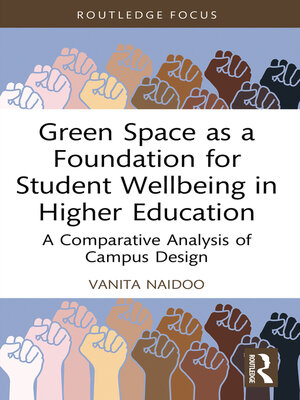Green Space as a Foundation for Student Wellbeing in Higher Education
ebook ∣ A Comparative Analysis of Campus Design · Routledge Research in Higher Education
By Vanita Naidoo

Sign up to save your library
With an OverDrive account, you can save your favorite libraries for at-a-glance information about availability. Find out more about OverDrive accounts.
Find this title in Libby, the library reading app by OverDrive.



Search for a digital library with this title
Title found at these libraries:
| Library Name | Distance |
|---|---|
| Loading... |
This book presents a unique comparative case study that details the narrative around campus design at the first institutions of public higher education in the United States. With a focus on Southern design at the turn of the 18th century, it explores the use and perception of campus green space and its influence on student wellbeing and belonging, using both structural and lived perspectives.
With attention to the post-COVID-19 context, the comparative analysis of two campuses, The University of North Carolina (UNC) at Chapel Hill and the University of Georgia, offers insight into how historical context, location, and design all influence the use of space. The case studies and analysis also serve as examples of how institutions and university systems hoping to engage with design practices can promote positive learning environments that are both inclusive and supportive. Each chapter addresses an experiential aspect of space, linking back to the dialogue on diversity, inclusion, and identity. In addition to considerations around diversity, the book also offers a rich narrative that uncovers the links between American Education and the New Southern Republic, shining a light on the role of place, historical origin, and socio-political circumstances in shaping campus design.
A superb resource for scholars and postgraduates studying higher education, environmental psychology, and urban planning, it chronicles the evolution of campus design at public institutions of higher education from a unique historical perspective.







